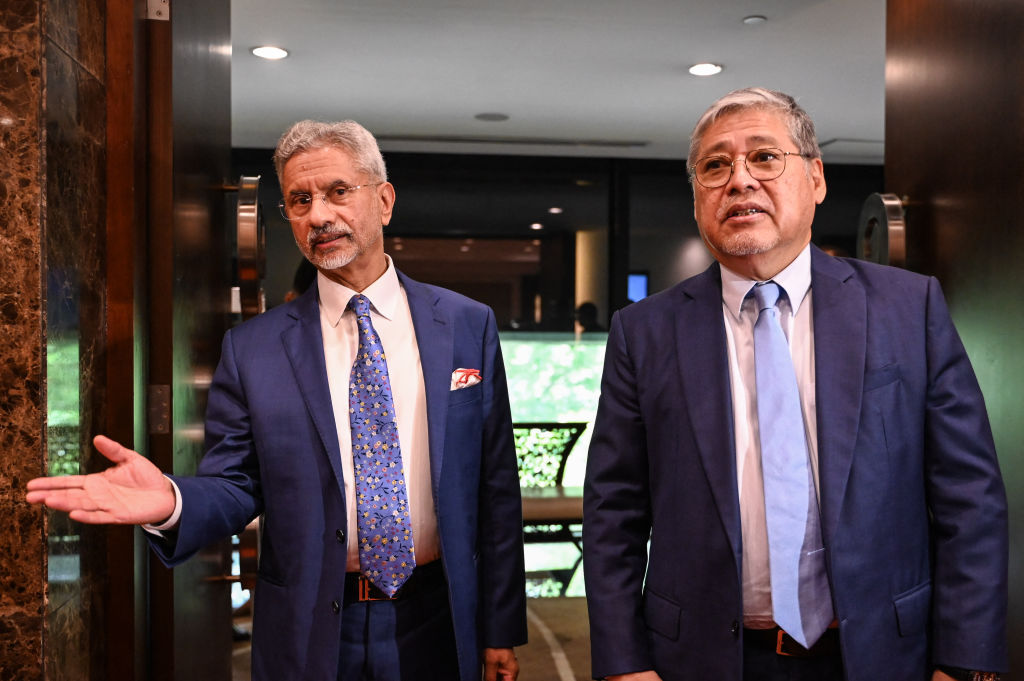
As India’s ‘Act East’ policy focussing on Southeast Asia moves into its 10th year, it is time for New Delhi to spell out more clearly how it aims to enhance its security and strategic partnerships with ASEAN nations.
There has been a clear shift in the trajectory of India’s engagements as the Act East policy increasingly drives India’s vision for the Indo-Pacific. Ties with Southeast Asian countries have grown, but the focus has been mainly through sectors like healthcare, education, agriculture, trade and investment, technology, green energy and cultural links.
India to date has therefore been viewed more as a soft power and cultural partner by most Southeast Asian nations, not a strategic partner. As India becomes bolder and more proactive in its foreign policy—in keeping with Indo-Pacific geopolitical developments—it needs to move beyond these existing areas of cooperation and signal more clearly the underlying objectives and aspirations behind the Act East policy, and what kind of partnership India seeks to achieve in Southeast Asia.
The shift already underway has recently been demonstrated, for example, by India’s deepening strategic and defence relationship with the Philippines, which has included the signing of a defence agreement in January 2022, under which India is supplying a shore-based, anti-ship variant of the BrahMos supersonic cruise missile to the Philippines and has offered to supply the Tejas Mark 1 fighter jet.
On a March visit to the Philippines, External Affairs Minister Subrahmanyam Jaishankar made bold statements with respect to the South China Sea dispute. These were a major step forward from the generic and carefully crafted language India previously used to forecast its neutrality. The past two statements made during the Philippines visit, emphasised ‘India’s support to the Philippines for upholding its territorial sovereignty’.
Jaishankar’s March trip—one of several to Southeast Asia since he took office—also took in visits to Singapore and Malaysia, with talks covering enhancements to Indian defence and maritime security cooperation with all the three countries. This included discussions on capacity-building, joint exercises, information exchange, and defence collaboration.
These developments build on India’s engagement in naval exercises with its Southeast Asian neighbours, such as the Corpat exercises and the hosting of training programs for naval officers from Southeast Asian countries in the India’s Naval War Colleges.
Prime Minister Narendra Modi’s participation in the 20th India-ASEAN Summit and 18th East Asia Summit in Jakarta, Indonesia, just days before hosting the G20 summit at New Delhi in September 2023 was also clearly reflective of the increased focus.
All of this represents a clear shift, attributable to the fact that the Act East policy now drives India’s Indo-Pacific vision. The developments send a message that India is ready to embark on a strategic and defence partnership not just with the Philippines but perhaps, over time, with other Southeast Asian nations as well, reflecting India’s growing ambitions as a global power and the leading voice of the Global South.
This said, India’s moves still represent early steps in a region where other countries’ relationships are already well established. The US, for instance, is a treaty ally of the Philippines and Thailand.
Although India has signed strategic partnership agreements with Malaysia, Vietnam, Singapore and Indonesia, these have yet to realise their full potential. It is a long road ahead for India to emerge as a full strategic player in the region, as recent surveys indicate.
One survey, by the ISEAS-Yusof Ishak Institute in Singapore, showed India as one of the ‘least strategically relevant partners to the ASEAN member nations’. It ranked ninth among the 11 dialogue partners of the ASEAN nations on regional influence and leadership. Respondents from Myanmar and Singapore ranked India as fifth and sixth respectively in terms of strategic relevance, highlighting the historical-cultural relationship between the countries. But respondents from Cambodia, Laos, the Philippines and Vietnam ranked India ninth in terms of strategic relevance.
The existing, non-security areas of cooperation have helped navigate the India-Southeast Asia links so far. But the focus needs to bring in security and strategic partnerships now, with Southeast Asia at the forefront of geopolitical complexities.
The India-Philippines security and strategic ties are progressing well, but, for India to be seen as a relevant strategic player and a country having regional influence, it is important to pay similar attention to the other Southeast Asian countries and to work towards similar deals with countries such as Vietnam and Indonesia. A one-size-fits-all approach does not work in Southeast Asia, as this region is very diverse, especially in its foreign policy orientation and perceptions.
It will take India some time to break out of its image as a soft power and cultural partner, and to be seen also as a strategic player. India’s approach to great power competition is similar to ASEAN’s position. For instance, despite its more vocal statements on the South China Sea, India is still treading carefully by not being part of the maritime exercises between US, Australia, Japan and Philippines in the disputed waters a few days ago.
Even while being a member of the Quad, India has managed to keep its strategic autonomy intact. Its vision aligns well with the ASEAN Outlook on the Indo-Pacific. Therefore India needs to map out its Act East policy to clearly project how it aims to enhance its security and strategic partnerships with the ASEAN member countries, while recognising each country’s sensitivities and national interests.
India at the same time should work with its like-minded partners such as Australia, Japan and others to ensure that the free, open and rules-based order is upheld in Southeast Asia and, by extension, the Indo-Pacific.

